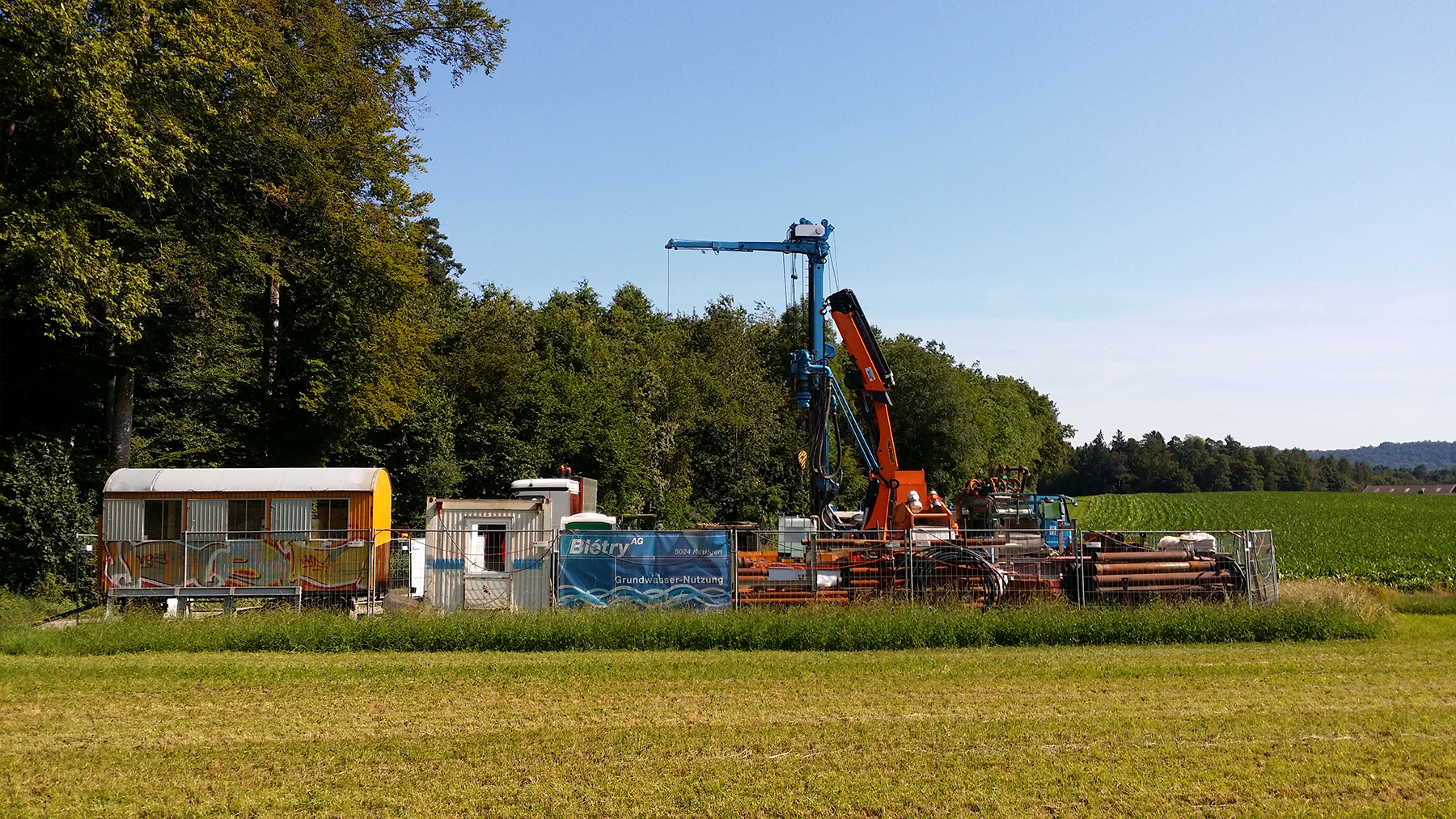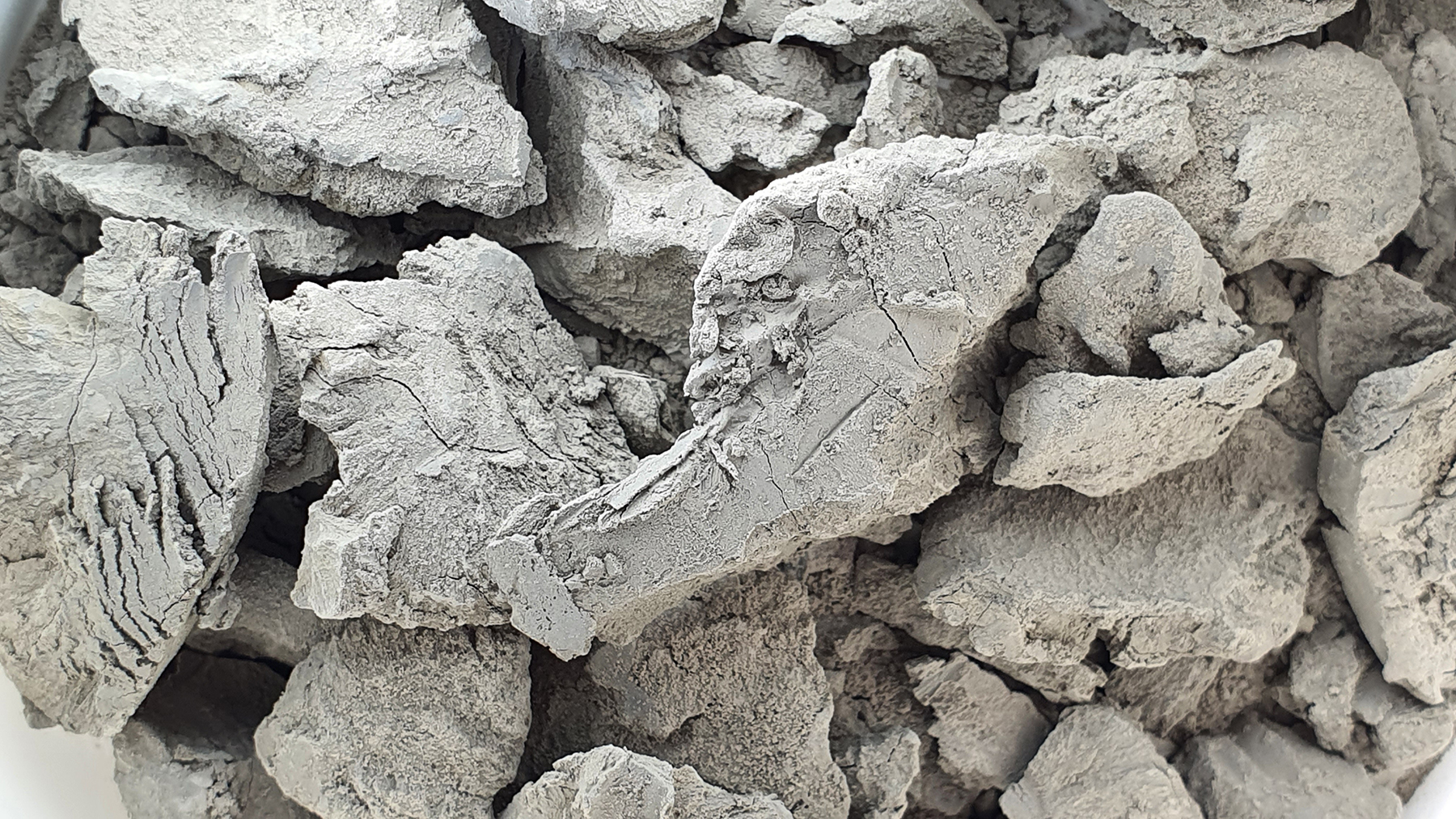Nuclear waste storage needs to withstand an ice age
A nuclear waste storage facility needs to be secure, even if glaciers were to churn down from the Alps into the midlands in a distant future. This is why Nagra arranged for a study of the sediments that had been deposited in former, deep glacial lakes. The layers are around 600,000 years old, making them much older than the last ice age, which was around 24,000 years ago. Good news for Nagra: it seems that the layers of stone lying beneath have not been eroded by ice since that time.
A team of researchers from the Aquatic Research Institute Eawag, the ETH Zurich and the Universities of Basel and Bern have investigated sediments drilled in the vicinity of the town of Bülach in the lowlands of the Canton of Zurich by the National Cooperative for the Disposal of Radioactive Waste (Nagra). The drill core is 278 metres long and describes nearly the entire geological history of the quaternary period, the most recent 2.6 million years of Earth’s history.
The prehistoric Lake Greifen extended to Bülach
Researchers took particular interest in the sediments that had been deposited in an elongated lake that must have reached Bülach – in a sense, it is an ancient Lake Greifen. The basin of this prehistoric Lake Greifen was carved out by the ice of the Alpine glaciers, and the resulting lake subsequently filled up with sediments. The researchers posed two questions: How old is the basin? Was it cleared out again by subsequent glacial advances? Although all signs currently point to a warming climate, there may still be another glacial period sometime in the future. An underground storage facility for radioactive waste needs to be secure for millions of years – including from recurring glacial advances.
Pore space water as a crucial element
The scientists used an ingenious method to determine the age of the sediments. They did so by determining the concentrations of helium-4 in the smallest amounts of water from the pore space of the sediments. This is because the decay of the uranium and thorium in the pore space water enriches the stable helium-4 isotope. And, as the decay proceeds at a defined rate, this allows them to calculate the time when the water was incorporated in the sediment.
The results were also published in the scientific journal Geology: the dated sediments from the prehistoric Lake Greifen are around 600,000 years old. The accuracy of the analysis is a moderate plus/minus 120,000 years; however, no one has ever dated the age of such sediments so far back in history. The accuracy primarily serves as evidence that the sediments are significantly older than the glacial advances of the last glacial period. Therefore, the trough in the bedrock called the Strassberg basin by the experts has not been gouged out further since that time. The more than 500-metre deep opalinus clay deposited there around 174 million years ago is undisturbed. In other words: based on our current understanding, even a brazen advance of the Rhine-Linth glacier from the region of Grisons and Glarus would not be enough to exhume nuclear waste that may one day be buried in the opalinus clay.
Publication details:First dating of an early Chibanian (Middle Pleistocene) glacial overdeepening in the Alpine Foreland using the 4He/U-Th method; Yama Tomonaga, Marius W. Buechi, Gaudenz Deplazes, Rolf Kipfer; Geology 2024; https://doi.org/10.1130/G52544.1 |
Source: Eawag
2024/11/12





